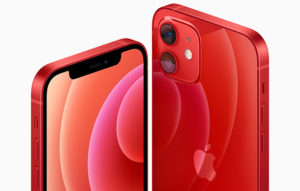
Qualcomm on Wednesday unveiled its Adreno 5xx GPU architecture next-generation visual processing technology and its 14-bit Spectra image signal processing unit at SIGGRAPH in Los Angeles.
The first two GPUs to use the new architecture, the Adreno 530 and 510, will be integrated in Qualcomm’s forthcoming Snapdragon 820 and 620/618 processors.
The Snapdragon 820 also will feature the 14-bit ISP, which supports DSLR-quality photography and enhanced computer vision.
Devices based on the Snapdragon 820 are expected to become available in the first half of 2016.
Samsung is rumored to have begun testing the Snapdragon 820 for its Galaxy S7 flagship phone.
However, the first phone to be based on it may be the Xiaomi Mi 5 Plus.
“We expect [the] Adreno 5-series GPU and Spectra ISP to be industry leaders in performance and features, while enabling new classes of visual user experiences,” said Qualcomm spokesperson Jon Carvill.
Autos, TVs, Gaming, Smartphones
Qualcomm also is considering the Snapdragon 820 for automotive navigation.
The Adreno GPU and Spectra ISP have “tremendous potential,” Carvill told TechNewsWorld, thanks to “an increasingly immersive visual experience in the car that takes advantage of high-resolution displays as well as cameras and sensors for driver safety.”
The Snapdragon 820 supports 4K.
Qualcomm “invested early in 4K, both in capture and display, for mobile devices,” Carvill pointed out. “We see these starting to pay dividends as consumers increasingly adopt 4K TVs in their homes, and the first mobile devices with 4K displays launch.”
The Adreno 5xx and 14-bit Spectra ISP “will translate into higher-quality pictures with lifelike colors” and offer PC-quality gaming and high-res video “with much more power efficiency” on mobile devices, Carvill said.
Qualcomm “has typically ranked at or near the top of smartphone SoCs, especially in terms of multimedia performance and features,” remarked Jim McGregor, principal analyst at Tirias Research.
The company has a unique multimedia subsystem that includes the Adreno GPU, Spectra ISP and Hexagon DSP, which “all work together in a heterogeneous manner,” McGregor told TechNewsWorld.
Competition for the Snapdragon 820 won’t come from chip makers Nvidia and Intel, McGregor said, but rather from third-party chipset vendors like MediaTek, and from companies like Apple, Samsung and Huawei/HiSilicon building their own in-house solutions.
The Big Picture
The Snapdragon 820’s significance “is going to be much more than just picture rendering,” said Werner Goertz, a research director at Gartner.
“It’s about artificial intelligence, machine learning, parallel processing and anthropomorphic processing,” he told TechNewsWorld.
The Snapdragon 820 “is not just iterative — not just the next best picture resolution,” Goertz said. “It’s the next iteration of camera, in that key technologies of the future will be fully reliant on GPU processing.”
For Qualcomm, it “is an important strategic roadmap component,” he pointed out.
The Snapdragon 820 “will strengthen competitiveness in the chipset marketspace, enable customers to reduce time-to-market and cost with chipset interoperability, and enable disruptive innovation, not only in device-embedded camera technologies,” Goertz predicted.
“More importantly, it will help accelerate AR/VR implementation across other device categories,” he said, “notably head-mounted displays, automotive and the Internet of Things.”
What About Consumers?
The Snapdragon 820 initially will show up in smartphones, which raises the question of how it will fare in that highly competitive but declining field.
Global smartphone shipments grew 15 percent annually to total 340 million units in Q2, the industry’s slowest growth rate in six years, according to Strategy Analytics.
The major markets — the United States, Europe and China — have matured, noted Strategy Analytics Research Director Linda Su , and a design transformation will be needed to revitalize growth.
The whiz-bang specs of the Snapdragon 820 might help, “especially in China, [where] many buyers make purchase decisions based on tech specs,” Tirias’ McGregor said.
The Qualcomm GPUs and chipsets will improve the user experience “not only by displaying nicer images,” said Gartner’s Goertz, “but by providing the processing muscle for contextualization, virtual personal assistants and multi-modal input/output.”






















































